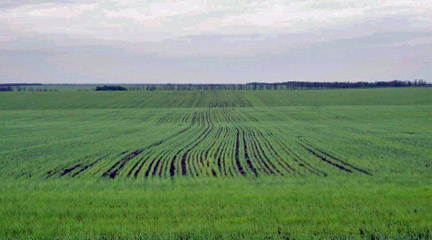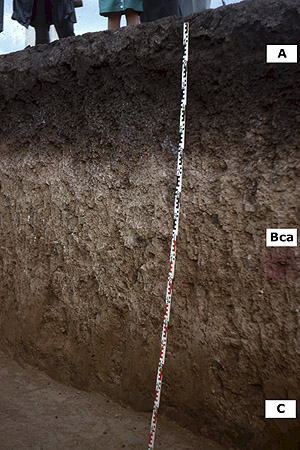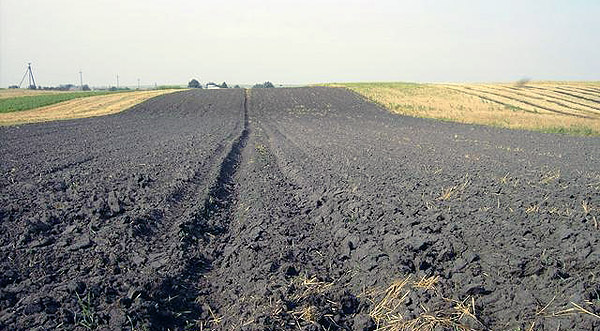
The Black Earth, or chernozem (чернозём from the Russian words for "black soil," chernaia zemlia), region is a belt of extremely rich and fertile soil stretching from the Moldova and the Western Ukraine eastward, narrowing as it goes further east into Siberia, before coming to an end near Irkutsk. This is some of the richest soil in the world.



The chernozem contains a very high percentage of humus, anywhere up to about fifteen percent, and also important organic minerals such as phosphorus and ammonia. The depth of the chernozem has been measured at anywhere from forty to two hundred and fifty inches, but is usually about a foot deep. Because it very fertile and does not require any fertilizer, it is considered some of the best soil in the world for growing grains. The "black earth" region of Ukraine extends throughout about two-thirds of the country.

For centuries the Black
Earth region was mainly steppe,
open grasslands with no real
agricultural being carried out. The problem was that the upper
level of the soil was so thoroughly entangled with roots, that it
proved impossible to cultivate with wooden ploughs. Only when
steel-tipped ploughs were introduced in the early nineteenth
century did agriculture become important. With more
improved machinery and efficient cultivation techniques, the Black Earth
region really emerged as the bread-basket of Russia at about the turn
of the twentieth century. The region proved to be enormously
important to the industrialization of Russia that was carried out by
Sergei Witte because Russia could now export wheat to make money to
invest in its industrial development. During the collectivization
and industrialization of the Soviet Union as part of Stalin's first
five-year-plan, the Black Earth region again bankrolled industrial
development in the country by exporting wheat from the Soviet Union,
but this time widespread famine resulted throughout the region as not
enough wheat was saved for domestic consumption.
